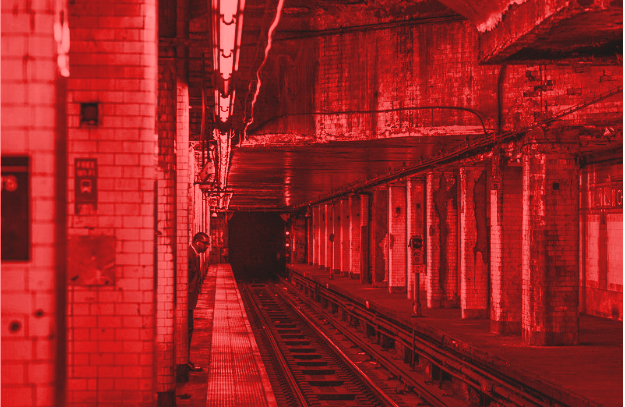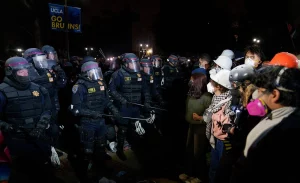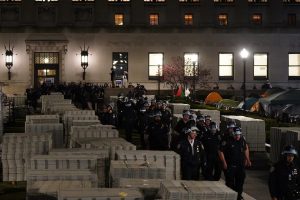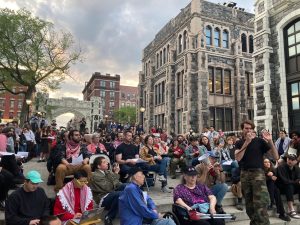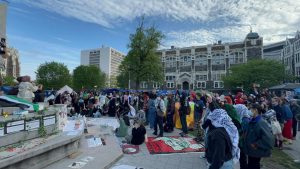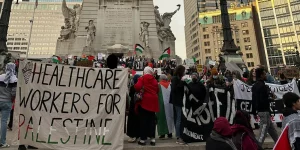Ask any New Yorker what they think about the state of the city and you’re sure to get a laundry list of complaints. Whether it’s rising rents and rampant homelessness, traffic jams and angry drivers, neighborhoods filled with vacant storefronts and homogenous chain stores, or long commutes on broken down trains and buses, residents have a lot to be angry about.
However, the events of last month were enough to make even the most tragically-hip and well-heeled New Yorker begin to doubt their passion for city living.
The problems began on July 13 when more than 60,000 Con Edison customers on the Upper West Side lost power. This blackout was followed by a scorching heat wave that sent real feel temperatures into the triple digits, which in turn led Con Edison to preemptively shut off power to 53,000 largely working-class residents in Queens and Brooklyn—a move supposedly meant to avoid wider outages across the city. During this same heat wave, the subway system saw one of its biggest shutdowns in years with all but one of the numbered train lines completely out of service for several hours because of a computer malfunction. This left many commuters stranded (sometimes for hours) beneath the muggy city streets on crowded and sweltering trains with little to no air conditioning. And then on July 22, just as residents were beginning to feel some relief from the heat, thanks in part to a summer rain storm, several subway lines were yet again shut down, this time due to flooding, and many neighborhoods, particularly in North Brooklyn, were inundated with rain water that was waist deep in some places. One man, in particular, was nearly washed onto the tracks in the Court Street Station in Queens, when water burst through a retaining wall between the train station and an adjacent construction site.
Although it was indeed a bad month, such events, as any native can tell you, are becoming increasingly common, and without a massive overhaul of the city’s aging infrastructure, are sure to become the new norm in a metropolis that is slipping into levels of decay that haven’t been seen since the mid-seventies, when NYC faced a massive fiscal crisis, and poorer boroughs like the Bronx were simply allowed to burn. Combine this with rising sea levels and the increasing number of snowstorms, heatwaves and hurricanes caused by climate change, and it’s obvious that the city is doomed without a radical reinvestment in and restructuring of public services that puts the needs of New Yorkers above the interests and profits of capital.
A Legacy of Neglect
As radical economists have pointed out, working people are not only exploited directly by their employers, but are regularly forced to subsidize the operations of capital itself. Whether through commuter costs, childcare, healthcare, unpaid domestic labor or regressive taxes that place the burden of the functioning of capitalist reproduction squarely on the shoulders of those who benefit the least from it, working people are regularly forced to pay for the “privilege” of their own exploitation. Over the last several decades, this has only been exacerbated by a politics of austerity and privatization that has slashed spending on public necessities like basic infrastructure, education and transportation, forcing working people to pay more, even as the quality of those services declines.
And this is exactly what has happened in NYC since the last fiscal crisis. While many see NYC’s infrastructure problems as simply a question of political will and financial resources, they are in fact by design symptoms of an economy that is controlled by and built to benefit the interests of capital. Rather than providing the necessary funds to upgrade and repair the now-ancient subway system—an action that would require much higher taxes on corporations and the very wealthy—the state has instead allowed and even encouraged the Metropolitan Transit Authority (MTA) to fund basic maintenance projects through fare increases and the acquisition of a massive debt that now costs the agency an unbelievable $2.2B a year in interest alone—an amount equal to about half of its total payroll. This means that every year, the MTA not only forces working people to pay more for the privilege of going to work, they then take $2.2B of the money acquired from those commuters and just give it to the banks. And even as subway and bus fares have continued to rise, the city and state have regularly failed to fund MTA capital plans, which has in turn only increased the MTA’s debt service costs and driven fare increases that far outpace inflation. Meanwhile, the percentage of direct state and local “operating assistance” has decreased by almost 50% since 2003, while income from the Bridge and Tunnel Authority has plummeted from 5.5% of total revenue to just 2.9%.
All of this underfunding is exacerbated by the fact that the NYC subway system is old—really old! For example, the signal system that was responsible for last month’s shutdown has mechanical components that were originally installed in the 1930s; many of the electrical cables used throughout the system are still cloth-covered relics from the 40s and 50s; and some trains still in operation (particularly on the C line) date back to the 1960s.
But the subway is not the only or necessarily the biggest part of NYC’s infrastructure problems. Many of the city’s sewage and water mains, the same ones that flooded in North Brooklyn, are 85 and 75 years old respectively, and at the current rate of replacement, (about 1% every two years at the moment) it will take about 200 years to replace the entire system, at which point much of the city will likely already be underwater.
Likewise, NYC’s electrical grid, which left almost 100,000 customers without service last month, is aging quickly. According to a 2017 report, “half of New York City’s energy and 80 percent of its peak demand comes from assets that are at least 45 years old,” and 95% of its gas turbines, which provide about a quarter of the energy needs of the city, will be beyond retirement age within five years. But instead of spending the money to repair and replace these aging systems, Con Edison has time and again postponed such upgrades. Indeed, the relay protection systems that were responsible for both blackouts, were supposed to be upgraded in 2009, at a cost of $350 million, but those plans were repeatedly delayed and eventually scrapped, despite operating income (i.e. profits) above $2 billion a year for that same period.
Building for Need instead of Greed
While politicians and their advisors scramble to find “fiscally responsible” public and private solutions to the city’s infrastructure crisis, the fact is there is really little that can be achieved within our current political and economic system beyond basic emergency maintenance. Even the Governor’s proposed five year $150B infrastructure plan would be woefully insufficient to avoid the worst-case disaster scenarios on the horizon, not to mention fixing the day to day troubles that plague the city and state.
This kind of half-measure approach is evident in the governor’s response to the recent blackout as well, in which he threatened to end Con Edison’s franchise with the city, presumably merely to offer it to some other profit-driven energy corporation. In contrast, Mayor Bill de Blasio, to his credit, suggested that the company be replaced by a public agency. Unfortunately, neither solution is adequate, because neither addresses the fundamental question of political power—that is, who really controls and makes the decisions about the city and its services?
As the decades-long underfunding of the MTA shows, under our current economic system public service providers like the MTA and Con Edison are just as beholden to the logic of capitalism and the power of capital as any private corporation. Even in the cases where these kinds of companies are publicly owned, adequate maintenance, periodic investments and technological improvement requires an inflow of public funds that need to be collected through taxes. The constant pressure from the capitalist class to lower taxes has an undeniable impact on all public services, from transportation to schools, depriving them of needed financial resources and causing a marked decline in the services they provide. In this sense, even publicly owned companies are, under capitalism, subordinated to the logic of maximizing profits for the private sector while taking away resources from economic activities that serve working-class people.
Replacing Con Edison with another service provider, as Cuomo has suggested, would do nothing to address the fundamental contradictions between private profit and public need. Likewise, although making Con Edison public would be a step in the right direction; unless we want an energy board comprised of millionaires, bankers and business managers representing corporate interests, we will need to make sure that all utilities are managed by and for working people.
Imagine if, instead of CEOs and bankers, real estate interests and political sycophants, the MTA was run by elected and fully recallable representatives of of the MTA workers who make the subway run every day and representatives from the actual communities it serves. And now imagine if those same communities, in conjunction with other committees of working people, had real control over the state and city budget, and were able to make decisions about planning, funding, and production. Under such a system high levels of regular infrastructure maintenance would be built into budgets and necessary capital investments for improvements and expansions would be regularly available when needed at no interest. The subway would be run entirely on renewable energy sources and would be free to all; the stations would be orderly and clean; there would be dedicated train cars for cyclists, the elderly and disabled, families, and women riding alone; advertising would be replaced with works of art, and community notices; and transit workers would be paid fairly and be able to fully participate in decisions about how best to use their labor to improve and maintain the train system.
Under such a system, Con Edison would likewise be replaced with an energy utility that was wholly controlled by the communities it serves; all electricity would be produced by renewable sources; and every community would receive the same quality of service for free or as close to free as possible. In such a situation the transportation and basic infrastructure of the city would not be treated as a commodity or a resource for capitalist exploitation or reproduction, but would be managed on the basis of the general needs of working people.
Unfortunately, our current system provides few, if any, opportunities for working people to participate in and have influence over the decisions that affect their daily lives. Protest and testimonials are fine and well, but without a concerted effort to directly challenge the power and control of capital there is little reason to expect anything to change. Capital feeds upon and cannot function without a reliable infrastructure, and therefore it is capital that should pay for it. But even higher taxes and public control, as necessary as they are, are short term solutions. And even such half-measures are not going to be enough to save us from the imminent threat of climate change, a threat that will require updates and investments to the city’s infrastructure that pale in comparison to the current estimates. Given the logic of profit, the intransigence of political will and the decades of neglect, it is pure fantasy to imagine that the city will be able to fix its infrastructure problems within the given political and economic framework. A reliable, affordable, and equally-accessible infrastructure requires a socialist solution.


